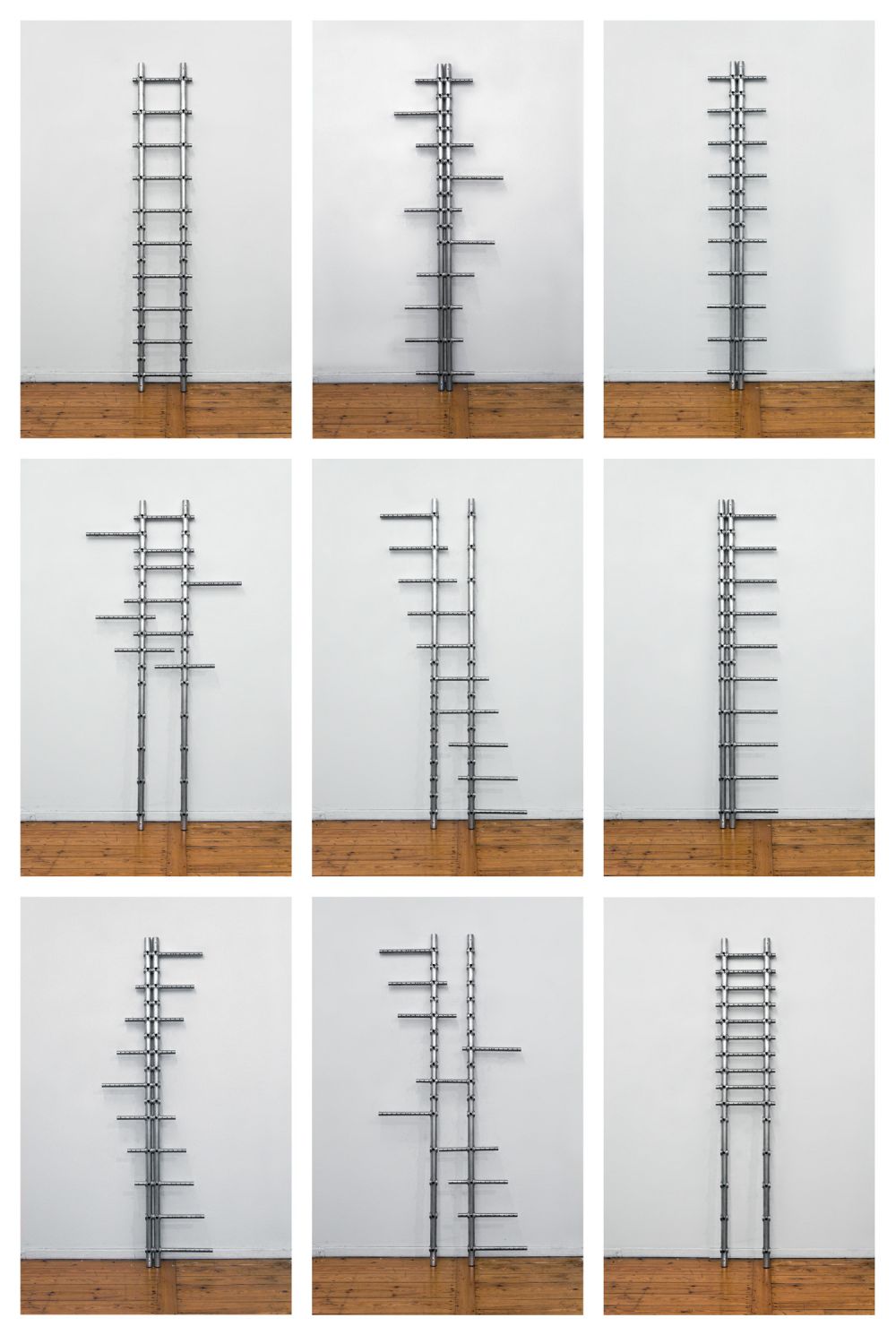2012
Material: alumininum, galvanized steel, plastic, hex-bolts
252x46x10cm

The portable ladder is an essential tool for artists working in the public realm, particularly for those wanting to reach surprising and seemingly impossible locations – and to make quick get-aways if necessary. Yet ladders are also precarious, bulky and linear; they can’t go around corners and they need to be placed on stable ground. This doesn’t, however, stop people from trying to extend the reach of ladders or balance them on unsuitable objects. Ladders encourage macho behaviour. How many of us have wobbled on the top rung of a ladder trying to paint the corner of a wall or change a too-high lightbulb? Ladders are the stuff of slapstick comedy but also of crime and adventure: the convict scaling the prison wall, kids sneaking over a neighbour’s fence, a thief climbing through a kitchen window.
Downey’s The Ladder is a customisable version that playfully exploits these associations. Starting with a conventional ladder format, it can be converted into a ladder with rungs that start only half-way-up, to one with rungs on only one side, another with asymmetrical rungs, and a ladder that alarmingly bends off to one side, among many other possibilities. This is a ladder you might expect to find in M.C. Escher’s fantastical architectural illustrations. You would certainly need to be an acrobat to demonstrate its potential functions. Indeed, the absurdity of the options suggests that The Ladder has not been devised as a serious solution to a graffiti artist’s, escapee’s or amateur hobbyist’s requirements. Rather, it is a fetish object for those who like to live dangerously.
As with much of his work, here Downey finds correlations between the geometry of the 21st-century city and the formalism of 20th-century modernism. Ladder makes us consider its formal qualities: a series of simple elements – long poles and short rungs – that can be combined in different ways to create new geometric abstractions, much like Sol Lewitt used the open cube as a unit from which to generate countless modular structures. Ladder refuses to accept the mono-functional, consumerist-capitalist logic of one tool for one job, and instead challenges us to use our tools to more creative ends.
Downey also makes reference to earlier movements like Constuctivism and Suprematism, when aesthetic experiments still had revolutionary potential. He is particularly drawn to the Russian Suprematist paintings of Lyubov Popova, and the way that her dynamic compositions of layered geometric planes defy conventional perspective, but instead pull in several directions at once or sweep upwards – like a ladder – to suggest a path to the future or cosmic unknown. One might likewise suggest a comparison with Tatlin’s Tower, the 400-metre-high double-helix leaning structure that Tatlin envisaged as a monument to the Russian Revolution and whose mythical status is in large part due to the fact that it was never actually built.
Jennifer Thatcher

